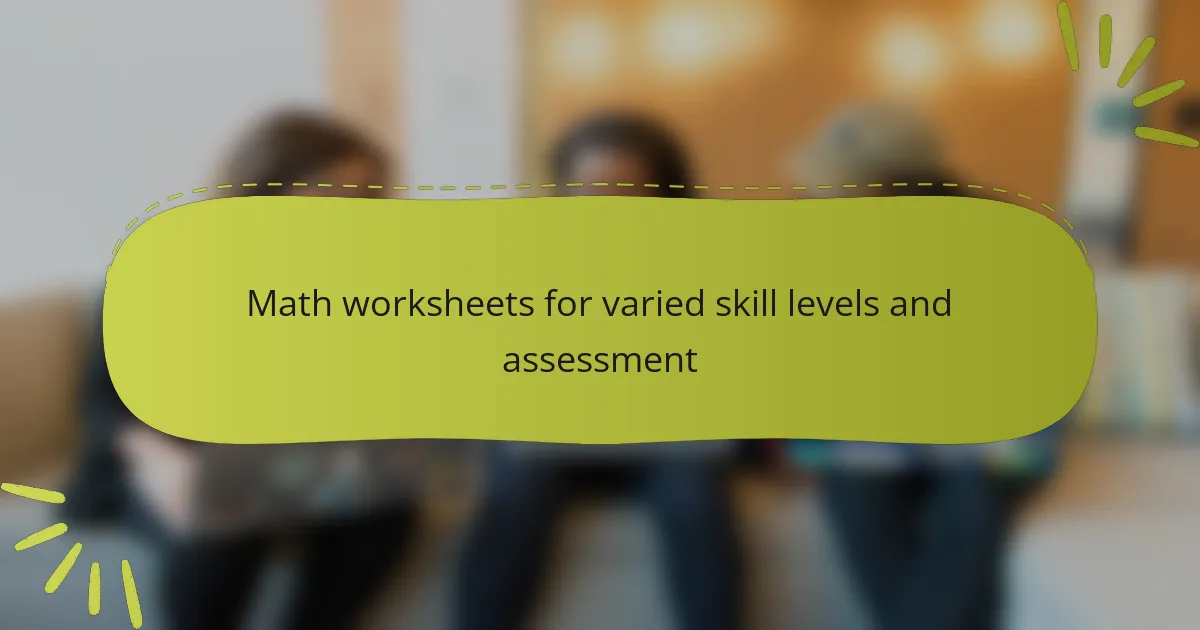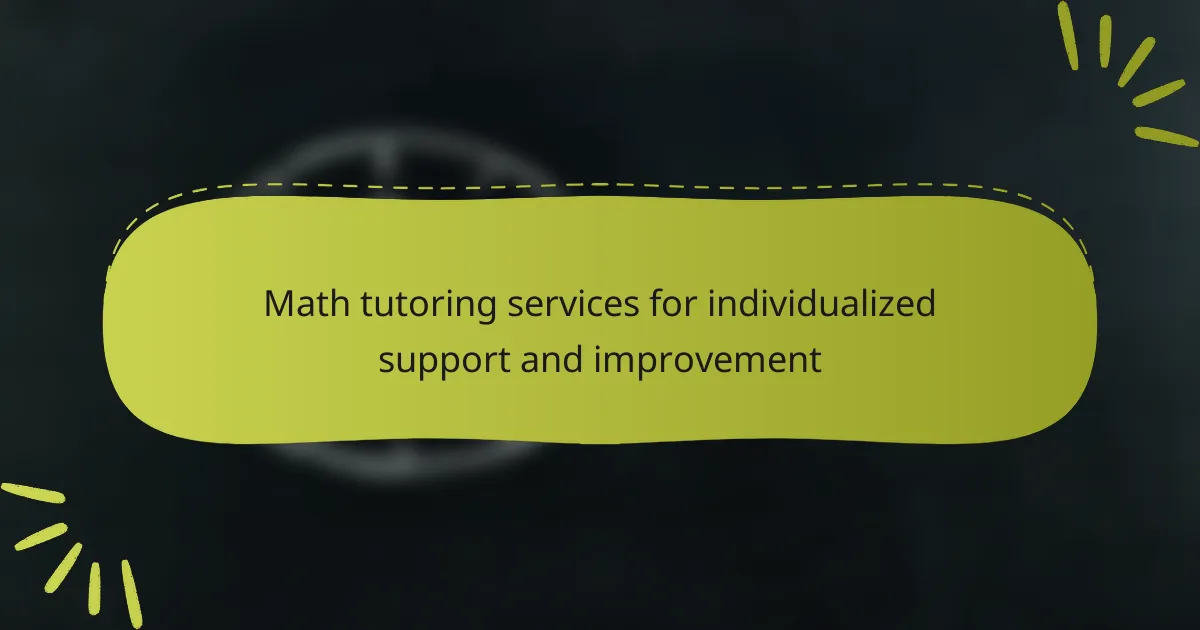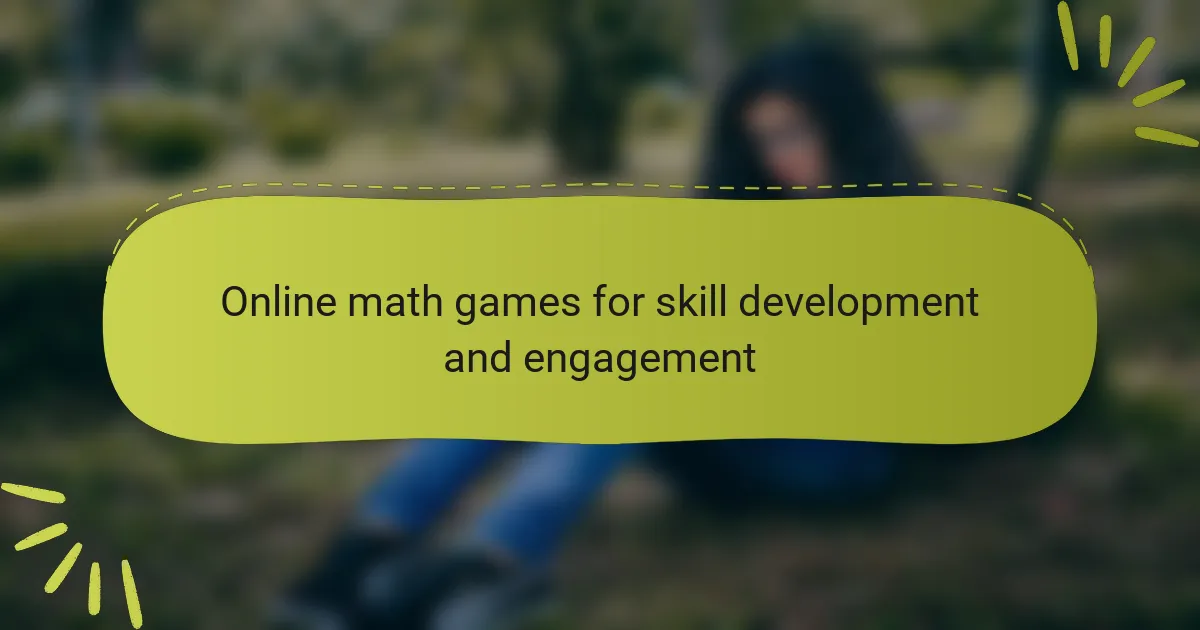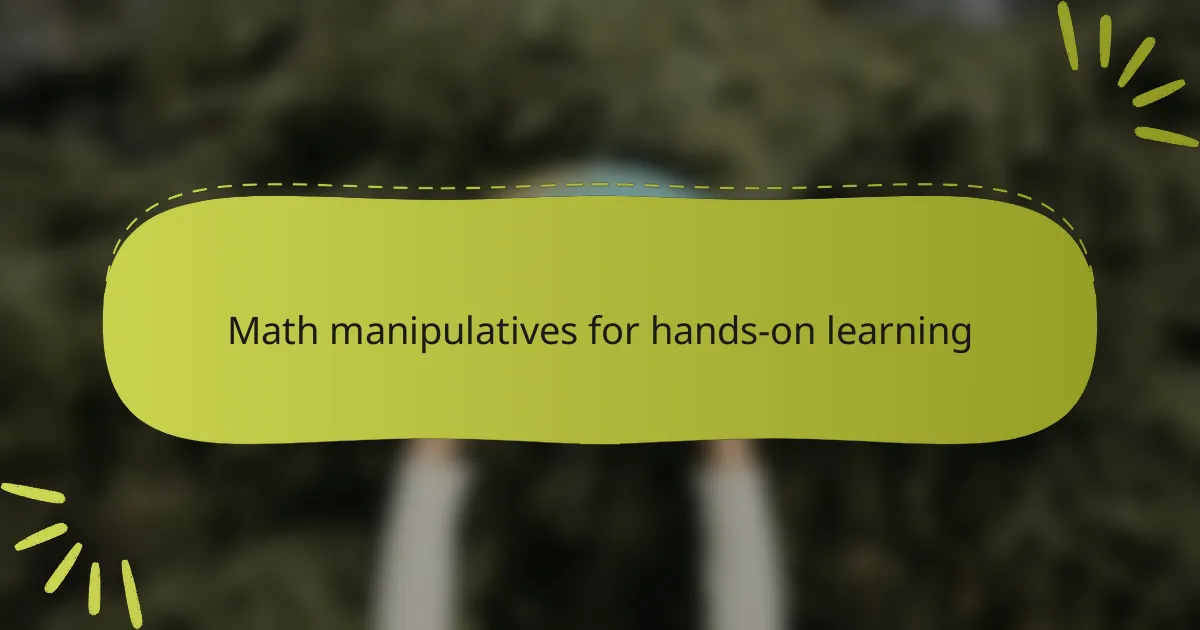Math videos for visual learning and concept reinforcement are educational resources that utilize visual aids such as animations, diagrams, and real-world examples to clarify mathematical concepts. These videos cater to various learning styles, particularly benefiting visual learners by enhancing retention and comprehension. The article explores different types of instructional math videos, including tutorial, problem-solving, conceptual, application, review, and interactive formats, each serving a specific purpose in mathematical education. Effective strategies for utilizing these videos include active engagement techniques such as note-taking, problem-solving pauses, and discussions with peers, which have been shown to improve learning outcomes. Overall, the article emphasizes the importance of visual learning in making abstract mathematical ideas more accessible.
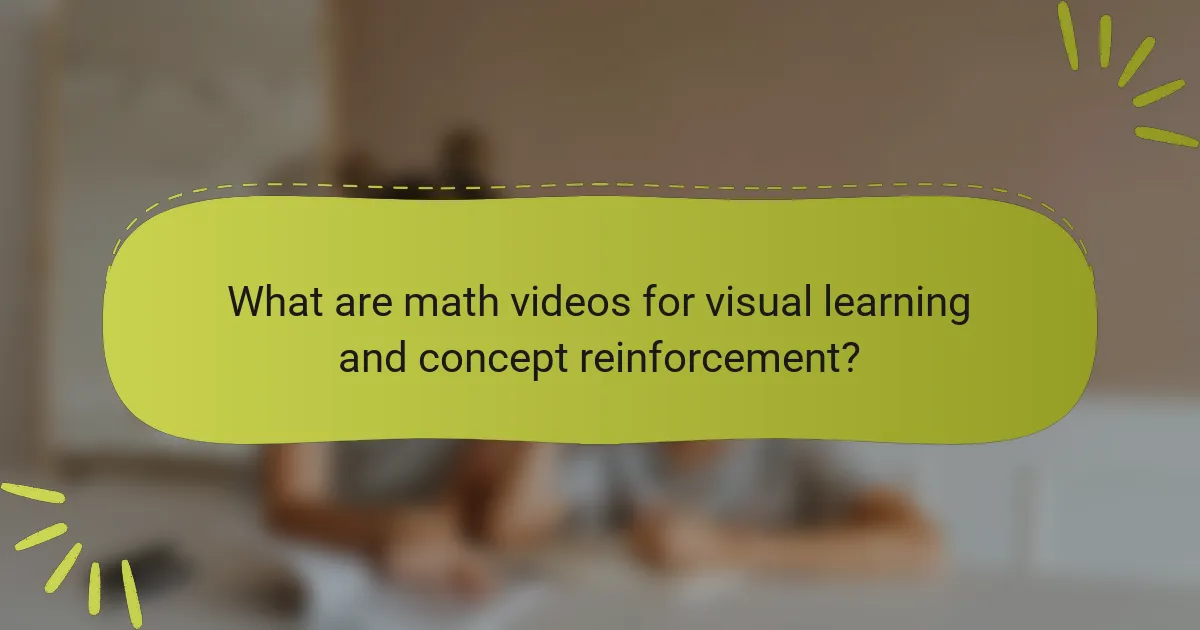
What are math videos for visual learning and concept reinforcement?
Math videos for visual learning and concept reinforcement are educational videos designed to enhance understanding of mathematical concepts through visual aids. These videos often use animations, diagrams, and real-world examples to illustrate complex ideas. They cater to various learning styles, particularly benefiting visual learners who grasp information better through imagery. Research indicates that visual learning can improve retention and comprehension. For instance, a study by Mayer (2009) shows that students learn better when information is presented visually alongside verbal explanations. This approach makes abstract concepts more tangible and accessible. Math videos also provide opportunities for repeated viewing, allowing learners to reinforce their understanding at their own pace.
How do math videos enhance visual learning?
Math videos enhance visual learning by providing visual representations of mathematical concepts. They utilize animations, diagrams, and real-life examples to clarify complex ideas. This visual engagement helps learners to better understand abstract concepts. Research shows that 65% of the population are visual learners. Visual aids can improve retention and recall of information. Math videos often break down problems into manageable steps. This step-by-step approach allows learners to follow along easily. Studies indicate that students who use visual learning tools perform better in math assessments.
What are the key features of effective math videos?
Effective math videos feature clear explanations, engaging visuals, and interactive elements. Clear explanations help viewers understand complex concepts. Engaging visuals, such as animations and diagrams, enhance retention. Interactive elements, like quizzes or prompts, encourage active participation. Additionally, effective math videos often incorporate real-world applications to illustrate relevance. They may also include step-by-step problem-solving processes for clarity. Research shows that multimedia learning can improve comprehension and retention rates in mathematics.
How do visuals aid in understanding mathematical concepts?
Visuals aid in understanding mathematical concepts by providing concrete representations of abstract ideas. They simplify complex information through diagrams, graphs, and animations. Visuals help learners see relationships between numbers and shapes. This enhances comprehension and retention of mathematical principles. Research shows that visual aids can increase student engagement and motivation. According to a study by Mayer (2001), multimedia learning improves understanding significantly. Visuals also cater to diverse learning styles, making math more accessible. Overall, they bridge the gap between theory and practical application.
Why are math videos important for concept reinforcement?
Math videos are important for concept reinforcement because they provide visual and auditory learning aids. These videos help students understand complex concepts through engaging visual representations. Research shows that visual learning can improve retention rates by up to 65%. Additionally, math videos allow learners to pause and replay content, facilitating self-paced learning. Studies indicate that this flexibility supports diverse learning styles. Math videos also often include real-world applications, making abstract concepts more relatable. This contextualization enhances comprehension and encourages deeper learning. Overall, math videos serve as effective tools for reinforcing mathematical concepts.
What role do math videos play in improving retention of concepts?
Math videos significantly enhance retention of concepts. They provide visual and auditory stimuli that cater to different learning styles. This dual engagement helps reinforce understanding. Studies show that students retain information better when it is presented visually. A study by Mayer (2001) found that multimedia learning improves retention compared to traditional methods. The use of animations and real-life examples in math videos aids in conceptual clarity. Additionally, students can pause and rewatch sections, promoting self-paced learning. This flexibility allows for deeper processing of the material, further enhancing retention.
How can math videos cater to different learning styles?
Math videos can cater to different learning styles by incorporating various teaching methods. Visual learners benefit from animations and graphics that illustrate concepts. Auditory learners engage through narration and discussions within the videos. Kinesthetic learners can follow along with interactive elements or hands-on activities suggested in the videos. Additionally, videos can offer subtitles to support reading comprehension for linguistic learners. Research indicates that multimedia learning can enhance understanding by presenting information in multiple formats. This approach aligns with the principles of Universal Design for Learning (UDL), which advocates for diverse teaching strategies to meet varied learner needs.
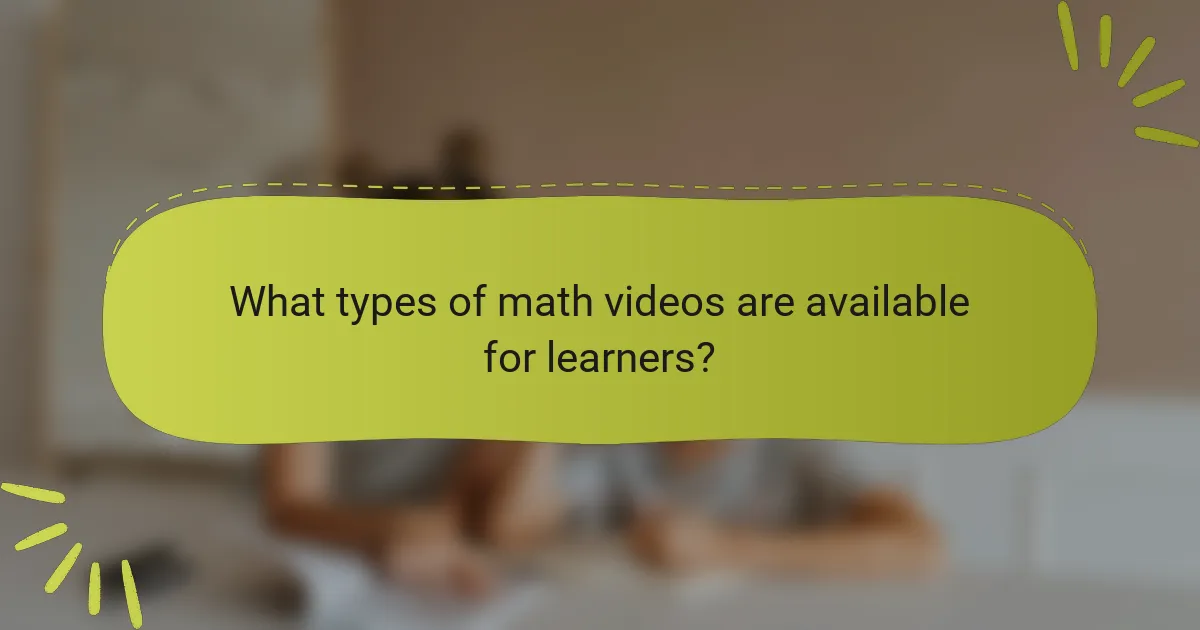
What types of math videos are available for learners?
Instructional math videos are available for learners. These videos cover various mathematical concepts and skills. Types include tutorial videos, which explain specific topics step-by-step. There are also problem-solving videos that demonstrate how to approach and solve math problems. Conceptual videos focus on understanding underlying principles. Application videos show real-world uses of math concepts. Review videos provide summaries of topics for exam preparation. Interactive videos engage learners through quizzes and activities. Animated videos simplify complex ideas with visual aids. Each type serves a unique purpose in enhancing math understanding.
How do instructional math videos differ from tutorial videos?
Instructional math videos focus on teaching specific concepts through structured lessons. They often include clear explanations, examples, and practice problems. These videos aim to build foundational knowledge and understanding. In contrast, tutorial videos typically provide step-by-step guidance on solving particular problems or tasks. They may not emphasize underlying concepts as much as instructional videos.
Instructional videos often feature a curriculum-based approach, aligning with educational standards. Research shows that structured lessons enhance retention and comprehension in students. Tutorial videos, however, may cater to immediate problem-solving needs rather than long-term understanding. This distinction highlights the educational intent behind each type of video.
What are the benefits of using animated math videos?
Animated math videos enhance learning by providing visual representation of concepts. They simplify complex ideas through engaging animations. This method caters to diverse learning styles, particularly visual learners. Research shows that visual aids can improve retention by up to 65%. Animated videos also maintain viewer interest, which increases engagement. They often break down problems into manageable steps. This approach helps students grasp the material more effectively. Overall, animated math videos serve as a powerful tool for reinforcing mathematical concepts.
How do real-life application videos enhance learning?
Real-life application videos enhance learning by providing practical context to theoretical concepts. They allow learners to see how math is used in everyday situations. This visual representation aids in better understanding and retention of information. Studies show that 65% of individuals are visual learners. Engaging with real-life scenarios makes abstract concepts more relatable. It also encourages critical thinking and problem-solving skills. Additionally, such videos can cater to diverse learning styles. Overall, they create a more interactive and engaging learning experience.
What platforms offer math videos for visual learning?
Khan Academy, YouTube, Coursera, and Udemy offer math videos for visual learning. Khan Academy provides a comprehensive library of instructional videos covering various math topics. YouTube hosts numerous educational channels dedicated to math tutorials, such as 3Blue1Brown and Math Antics. Coursera features courses from universities that include video lectures on math concepts. Udemy offers a wide range of math courses with video content for learners at all levels. These platforms are widely recognized for their effective visual learning resources in mathematics.
Which online resources provide high-quality math videos?
Khan Academy, YouTube, Coursera, and edX provide high-quality math videos. Khan Academy offers comprehensive lessons on various math topics. YouTube has channels like 3Blue1Brown and Numberphile that explain concepts visually. Coursera partners with universities to deliver structured math courses. edX also offers university-level math courses with video content. These resources are widely recognized for their educational value.
How can educators utilize video content in their teaching?
Educators can utilize video content by integrating it into their lesson plans. Videos can illustrate complex math concepts visually. This aids in comprehension and retention for visual learners. Additionally, videos can provide real-world applications of mathematical theories. Research shows that students engage more with interactive video content. Incorporating quizzes or discussions after viewing enhances understanding. Platforms like Khan Academy offer structured math videos for various levels. These resources can be accessed anytime, supporting diverse learning paces.
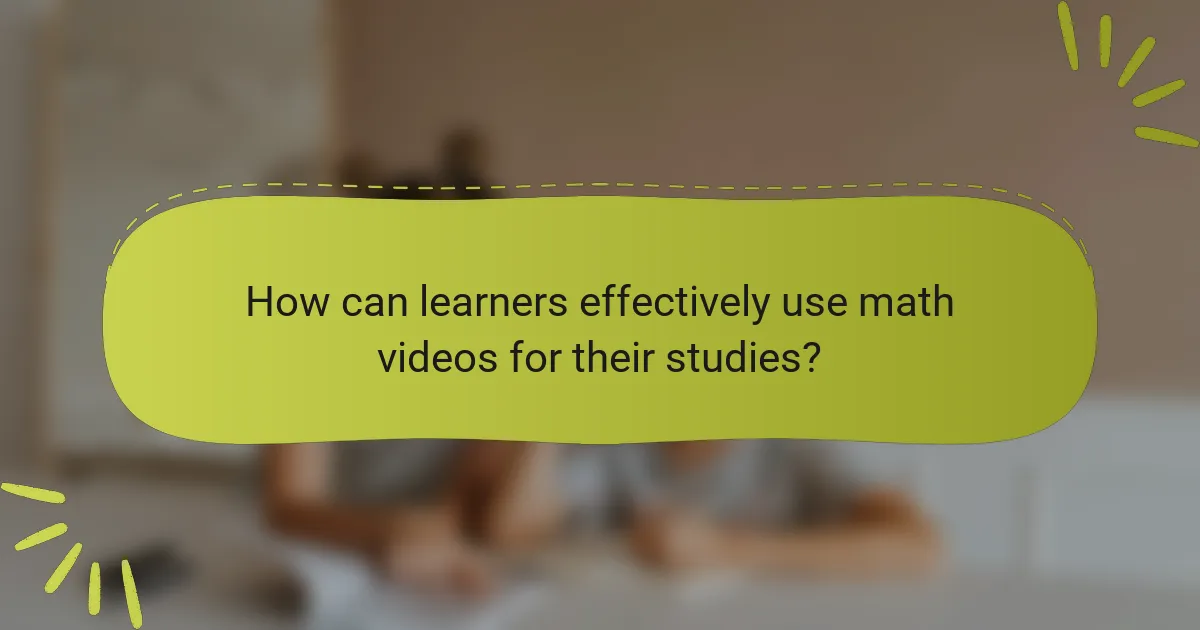
How can learners effectively use math videos for their studies?
Learners can effectively use math videos by actively engaging with the content. They should take notes while watching to reinforce understanding. Pausing the video to solve problems presented can enhance retention. Re-watching complex sections helps clarify difficult concepts. Utilizing supplementary resources, such as worksheets, alongside videos can provide additional practice. Discussing the material with peers can foster deeper comprehension. Research indicates that active engagement strategies improve learning outcomes. A study by the University of California found that students who actively participated while learning from videos scored higher on assessments.
What strategies can enhance the learning experience with math videos?
Incorporating interactive elements can enhance the learning experience with math videos. Interactive quizzes and polls engage viewers actively. This strategy encourages retention of mathematical concepts. Providing visual aids alongside explanations supports different learning styles. Clear, concise animations can illustrate complex ideas effectively. Segmenting videos into shorter clips aids in focus and comprehension. Offering supplementary materials, such as worksheets or problem sets, reinforces learning. Research shows that active engagement increases understanding and retention in educational settings.
How can learners take notes while watching math videos?
Learners can take notes while watching math videos by using a structured approach. They should start by preparing a notebook or digital document for organized note-taking. During the video, they can pause frequently to jot down key concepts and formulas. Writing down examples provided in the video helps reinforce understanding. Additionally, learners should summarize sections in their own words, which aids retention. Using bullet points can enhance clarity and make notes easier to review later. Incorporating diagrams or sketches alongside written notes can further solidify concepts. This method aligns with educational research indicating that active engagement improves learning outcomes.
What techniques can help reinforce concepts after viewing videos?
Active recall is a technique that helps reinforce concepts after viewing videos. This method involves retrieving information from memory without prompts. Studies show that active recall enhances retention significantly. Another effective technique is spaced repetition. This method involves reviewing content at increasing intervals over time. Research indicates that spaced repetition improves long-term memory retention. Additionally, summarizing key points can aid in understanding. Writing summaries requires processing information, which solidifies learning. Engaging in discussions about the video content further reinforces concepts. Conversations encourage deeper processing and clarification of ideas. Lastly, applying learned concepts through practice problems enhances comprehension. Practical application solidifies theoretical knowledge effectively.
What are common challenges faced when using math videos?
Common challenges faced when using math videos include lack of engagement, varying learning paces, and accessibility issues. Students often find it hard to stay focused during lengthy videos. This can lead to decreased retention of information. Additionally, learners have different speeds at which they grasp concepts. Some may need to pause and replay sections, while others may find the content too slow. Accessibility can also be a barrier. Not all students have reliable internet access or devices to view videos. Furthermore, videos may not cater to diverse learning styles. Some students may prefer interactive or hands-on learning rather than passive viewing. These challenges can hinder the effectiveness of math videos in enhancing understanding.
How can distractions be minimized while watching math videos?
To minimize distractions while watching math videos, create a focused viewing environment. Choose a quiet space free from interruptions. Turn off notifications on devices to avoid distractions. Use headphones to block out ambient noise. Set specific goals for each viewing session to maintain focus. Break videos into shorter segments to enhance concentration. Engage actively by taking notes during the video. Research indicates that a dedicated study environment improves retention and understanding.
What should learners do if they struggle to understand video content?
Learners should pause the video and rewatch sections they find confusing. They can take notes to summarize key points. Seeking additional resources, such as textbooks or articles, can provide clarity. Engaging in discussions with peers or instructors can enhance understanding. Using subtitles may help in grasping complex terminology. Practicing related problems can reinforce concepts presented in the video. Online forums or study groups can offer support and different perspectives. These strategies are effective in improving comprehension of challenging video content.
What best practices should be followed when integrating math videos into study routines?
Integrating math videos into study routines requires a structured approach. First, select videos that align with specific learning objectives. This ensures that the content is relevant. Next, schedule regular viewing times to create consistency. Consistent practice enhances retention of concepts.
Additionally, encourage active engagement by pausing the video for problem-solving. This reinforces understanding and application of the material. After viewing, summarize key points to solidify learning. Summarization aids memory retention.
Lastly, review the videos periodically to reinforce concepts. Regular review helps in long-term retention of information. Following these practices can enhance the effectiveness of math videos in study routines.
Math videos for visual learning and concept reinforcement are educational tools that enhance understanding of mathematical concepts through visual aids such as animations and diagrams. These videos cater to various learning styles, particularly benefiting visual learners, and are shown to improve retention and comprehension. Key features of effective math videos include clear explanations, engaging visuals, and interactive elements, while different types of videos serve specific educational purposes. The article explores how math videos enhance learning, their importance in concept reinforcement, and strategies for effective use in study routines. Additionally, it addresses common challenges faced by learners and best practices for integrating these resources into educational settings.
